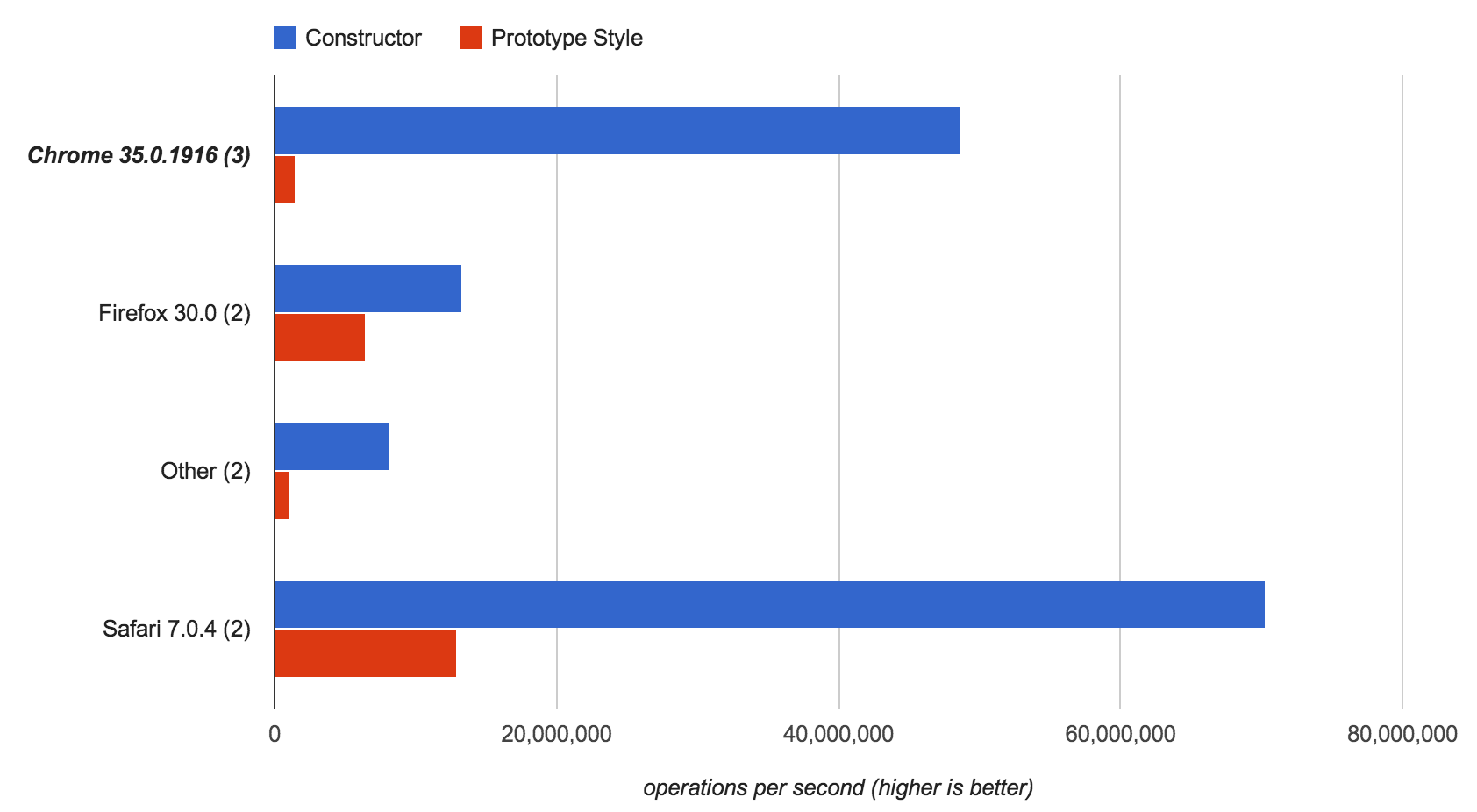Intro
I was watching the Advanced JavaScript course on Frontend Masters and Kyle brought up his concept of “OLOO” (objects-linked-to-other-object). It reminded me of a blog post by Keith Peters a few years back on Learning to live without “new” where he explains using prototypal inheritance instead of constructor functions. Both are examples pure prototypal coding.
The Standard Way
The way we were taught to create objects in JavaScript is to create a constructor function and add methods to the function’s prototype object.
1 2 3 4 5 6 | |
To create a sublcass, we create a new constructor function and set it’s prototype to the parent prototype. To call the parent constructor, we need to call it passing in this as the context object.
1 2 3 4 5 6 7 8 9 10 | |
The Prototypal Way
If you’ve had any exposure to prototypal languages, the above example will look strange. I’ve tried out the IO language which is a prototype based language. In a prototypal language, you create a prototype by cloning Object and adding methods and properties to it. You can then clone that prototype to create instances to use or you can clone it to create a prototype that you can extend. This is how the above example would look in IO:
1 2 3 4 5 6 7 8 9 | |
The Good News
We can code this way in JavaScript! The Object.create function is similar to IO’s clone. Here’s a pure prototypal implementation in JavaScript. Other than syntax, it’s the same as the IO version.
1 2 3 4 5 6 7 8 9 10 11 12 13 | |
The Bad News
JavaScript engines have optimizations when you use constructor functions. Testing the two different options on JSPerf shows the prototypal implementation to be up to 90 times slower than using constuctors.

Also, if you are using frameworks such as Angular, you have to use constructor functions when you are creating controllers and services.
Enter Classes
With ES6 we have a new class syntax. This syntax is just sugar for the standard constructor way to produce objects. It looks like we are creating classes like one would in Java or C#, but it’s still creating prototype objects under the covers. This will be confusing for people coming from class based languages as they will expect it to have the same properties as a class in their language when it’s really creating prototypes.
1 2 3 4 5 6 7 8 9 10 11 12 13 14 15 16 17 18 19 20 | |
Conclusion
If I had a choice, I would always write using a pure prototypal style. It’s more expressive, dynamic and fun. Because of the way the way the virtual machines optimize for constructor functions and the way frameworks use them, production code I write will still use constructor functions. Once ES6 becomes common, I expect I’ll be using the class syntax instead as it’s easier than using constructor functions.